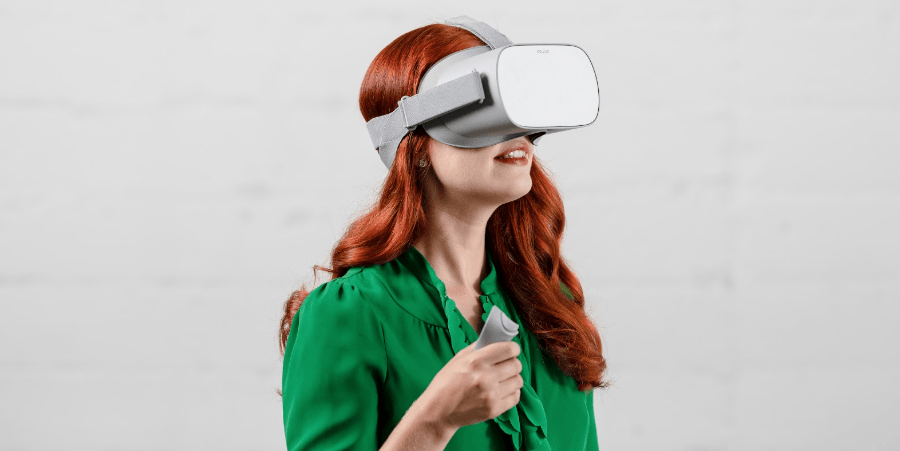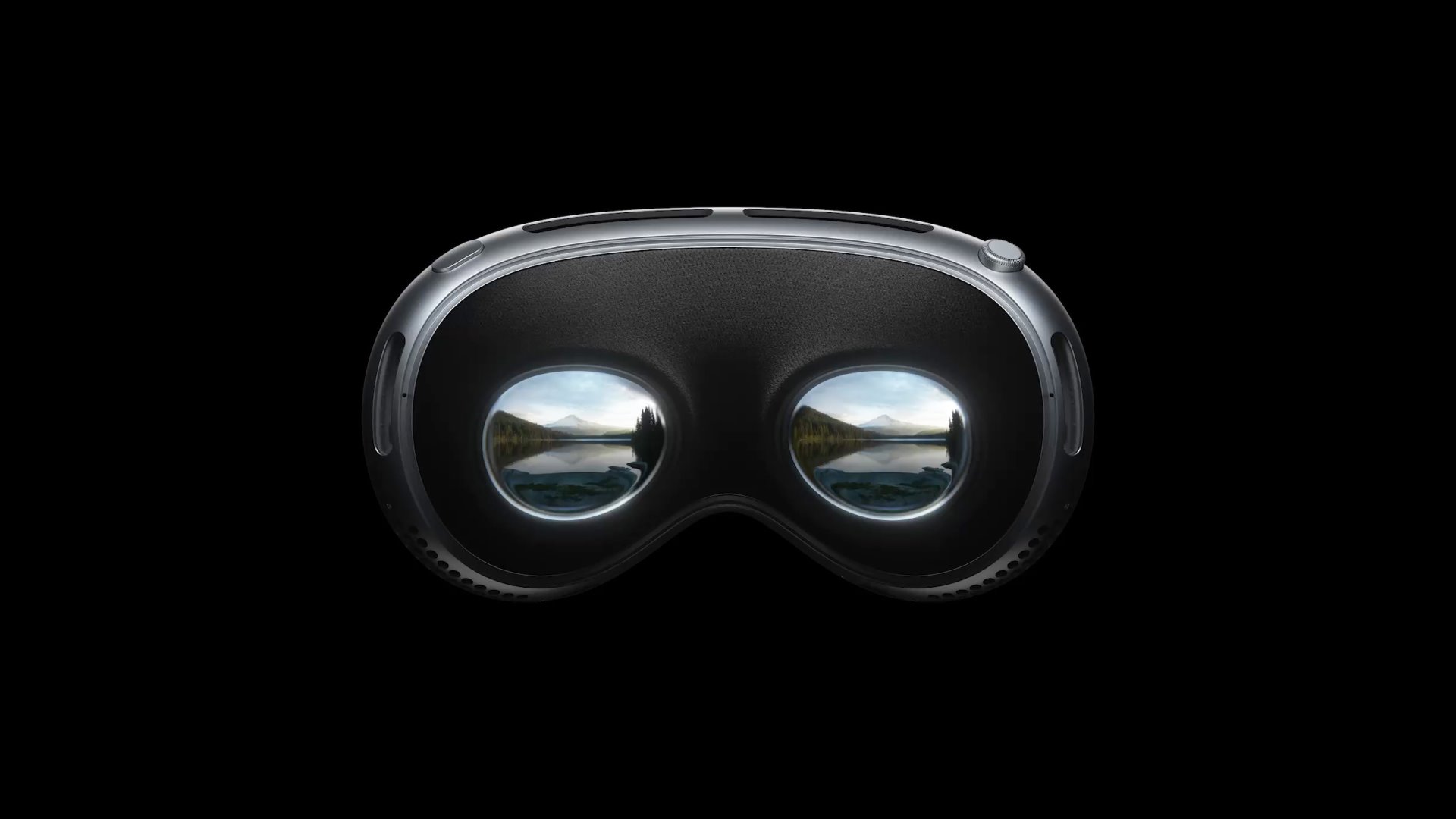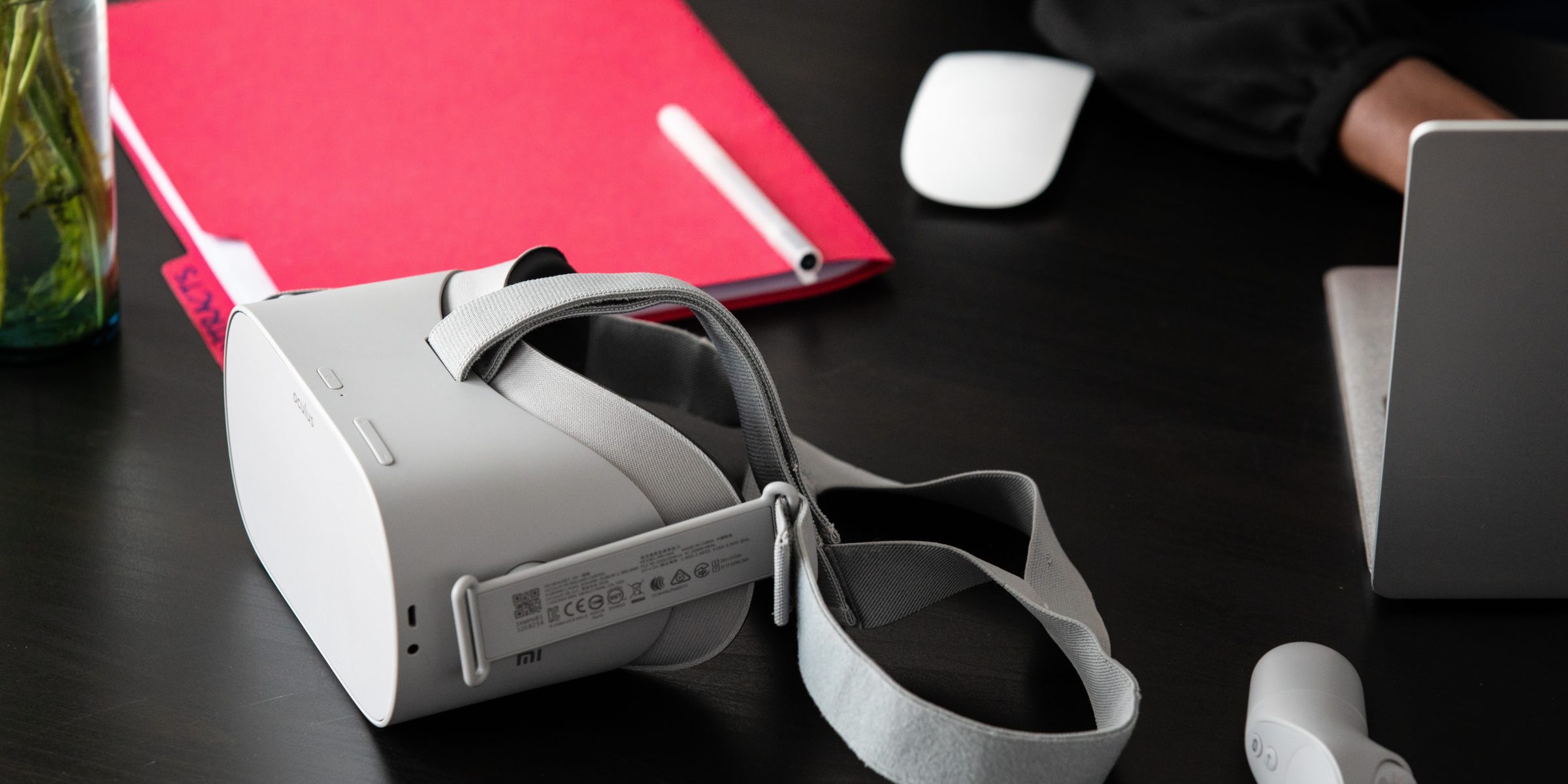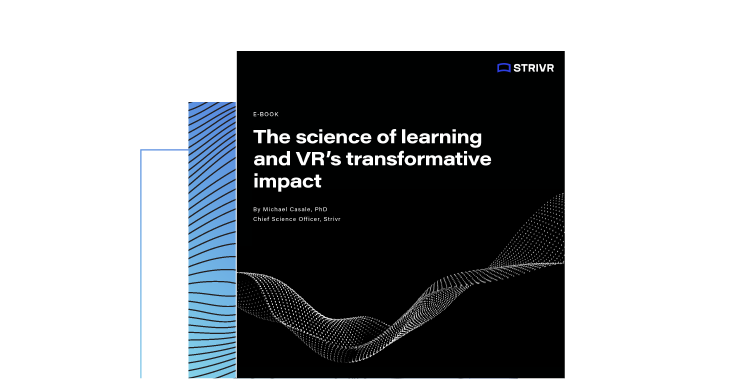Instructional design is a pillar of enterprise Learning & Development programs. When it is well-executed, everyone benefits — employees, customers, and the business.
But great instructional design in a traditional environment does not necessarily translate to great instructional design in Virtual Reality (VR). As VR takes the stage as the most engaging and impactful training methodology available, it’s important to understand the many facets of designing for this medium.
I was already a veteran instructional designer when I joined Strivr after working for many years at an enterprise company. It didn’t take long for me to realize that learners in VR were going to be highly engaged, thanks to the immersive nature of VR.
The science behind VR’s engaging and transformative impact
Instructional design for highly engaged learners
With 2D design, people can easily get distracted by their surroundings. But in the VR headset, wherever they turn, they see and hear the learning experience. There’s no chance for them to doze off or for their minds to wander.
From an instructional design perspective, that’s ideal!
But I also realized that Immersive Learning is a vast departure from traditional instructional design.
I meet directly with customers, usually in their own environment, to get a sense of their unique business objectives and any training challenges they might have.
It is really important for customers to think about VR training as a way to directly impact an enterprise-wide objective, as opposed to a replacement for modules that may already be in videos or eLearning.
I probe for real-world scenarios that help us better train an organization’s learners, and this work often takes place on a factory floor or in a retail environment, as opposed to in a conference or training room.
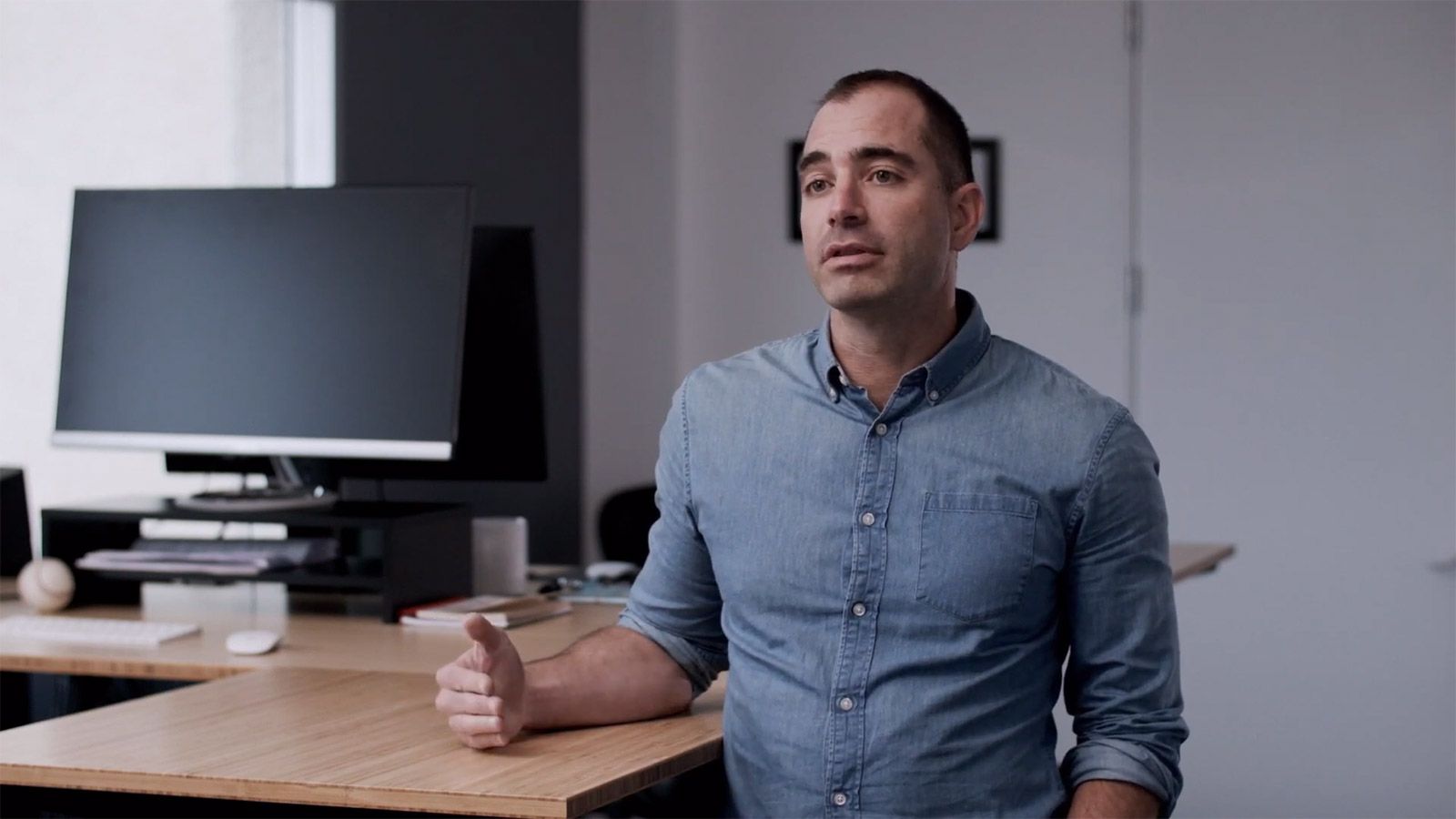

Then we take it all “back to the lab” and insert what we know about brain science, learning data, and instructional design principles to package our ideas into effective VR modules. Let’s dig a little deeper.
Content creation for Immersive Learning
Here’s an overview of the Immersive Learning content creation process at Strivr.
Step 1: Identify business objectives and map to learning objectives
I work with a dedicated group of experts, including an immersive content specialist, a solutions architect, and a post-production associate. We then work closely with Strivr’s data science team to make sure each module we build will give us a strong data set in order to evaluate learners and the training overall.
First, I meet with the solutions architect and immersive content specialist. The solutions architect runs the project from start to finish and keeps Strivr and the customer on track. The immersive content specialist is essentially a filmmaker with expertise in filming for VR. There are some areas where our skills intersect, and others where we differ, which makes collaboration lively and productive.
Our team has a whiteboarding session to come up with ideas on how we’d like to present the information in the learning modules. Our goal is to create learning objectives that map directly to the customer’s business objectives using instructional design science and best practices to plan for optimal outcomes.
IN PRACTICE: MAPPING LEARNING OBJECTIVES
For example, one retail customer relies heavily on efficient supply chain operations and inventory management. Their business objective is to develop standardization of performance that reinforces their mission of “zero loss” culture — products don’t go missing, and every inventory item can be accounted for. Our team collaborated closely with the customer to define these learning outcomes:
— Identifying & defining potential loss observations
— Learning how to recall the observed loss
— Driving home the impact of reporting every loss
Step 2: Build a curriculum outline
Next, building on the ideas we’ve reached consensus on, we create a curriculum outline for the customer. The end result is the solidifying of learning objectives, with an outline that includes an intro piece, individual lessons, and activities for learners.
Lesson activities typically include things like multiple-choice quizzes that ask questions about the environment, scene hunts where users must identify objects or problems to show proficiency, and scene explorations where the user is asked to click on certain markers or objects to complete a task. This type of learning goes beyond traditional paper assessments and multiple-choice quizzes that can be taken out of context.
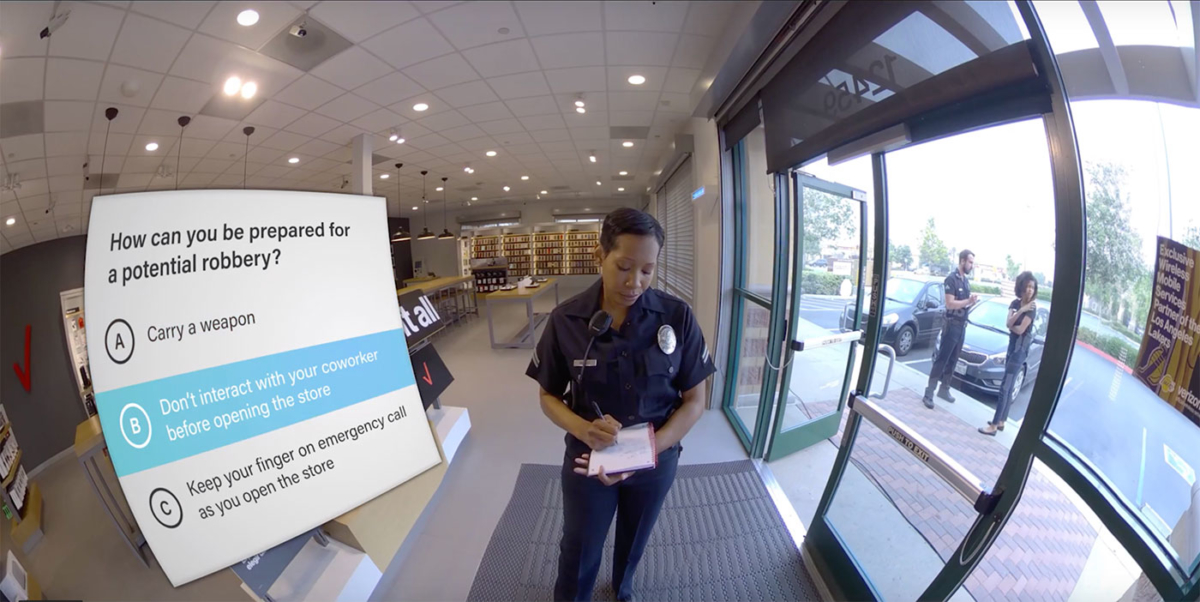
We present our proposed curriculum outline to the customer in a “deep dive” meeting and collaborate with them to finesse it until it’s just right.
The instructional designer, immersive content specialist, and solutions architect work together to implement customer feedback or dig deeper into it. Sometimes we get suggestions that aren’t easily implemented into a 3D environment, so we take care to help our customers move out of the “2D mindset” and into an “immersive” one.
Step 3: Write the script
Our team reconvenes to prepare for the script. While the ideas for the script are collaborative, the actual script-writing is mostly up to me, the instructional designer. That ensures that all voiceover, assessment questions, and feedback are expertly designed for optimal learning.
Once our team has reviewed and finalized the script, we share it with the customer. There might be a few drafts to ensure that the final script is an elegant combination of dynamic VR experience and learning principles aligned with the learner’s role.
To make sure our script stays on track with our objectives, I also track all the data points we need to capture, along with our evaluation plan and learning objectives. We might, for instance, collectively decide that for the user to pass a particular training module, they need to answer nine out of ten questions right.
Now, the excitement begins: filming.
Step 4: Production
Once the script is approved, it’s in the hands of our immersive content specialist, who builds a shot list and enters production. Typically, the modules are filmed at the customer’s location.
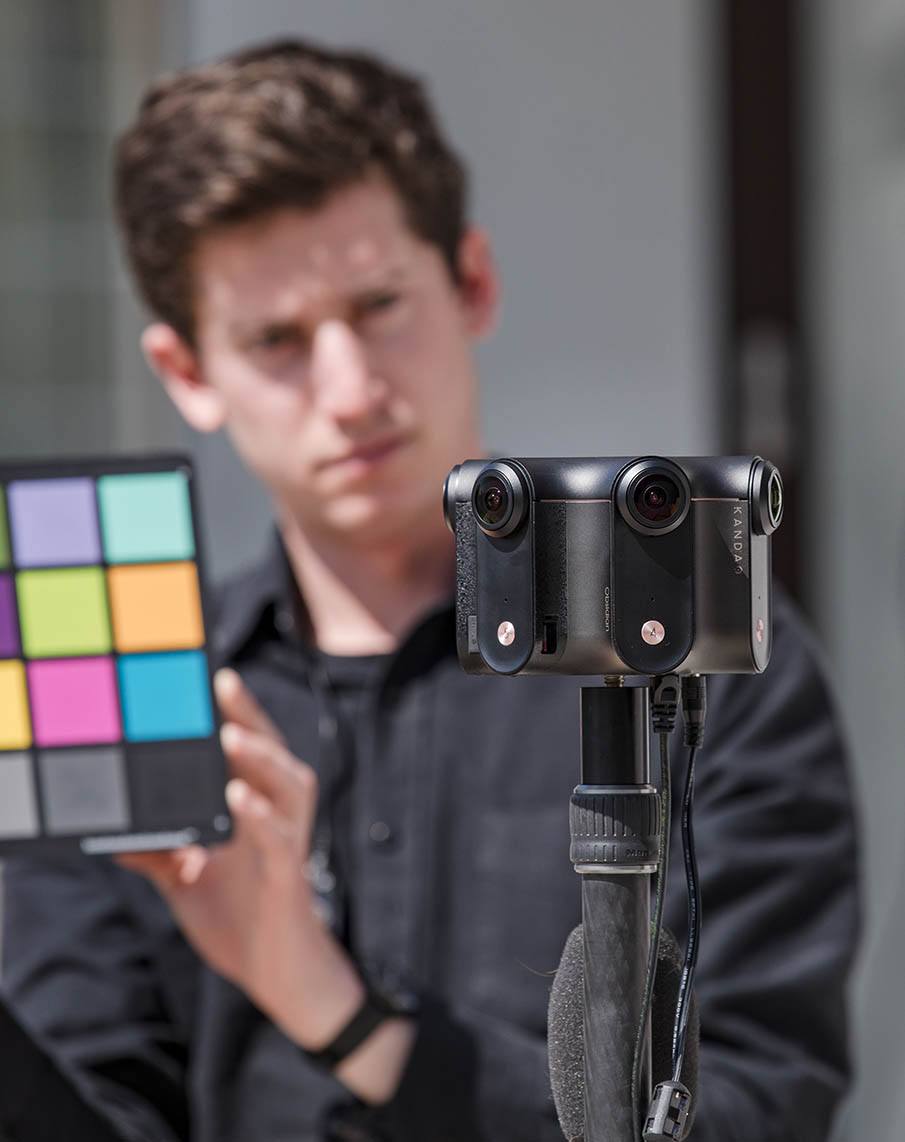
The film crew follows the written script as closely as possible, but if it turns out that adjustments need to be made in the moment, those changes get notated in the script so I can adjust accordingly.
Any voiceover work is also taken care of during the production phase.
Behind the scenes of how Immersive Learning takes shape
Step 5: Post-production
When 360-degree film assets come back, the team meets to review the footage and do critical post-production work. Filming in a VR environment is very different from taking 2D captures. All of the film elements must be stitched together properly so the final product doesn’t look choppy or create a bad experience for users. Once they are stitched together seamlessly, editors pass the assets to me.
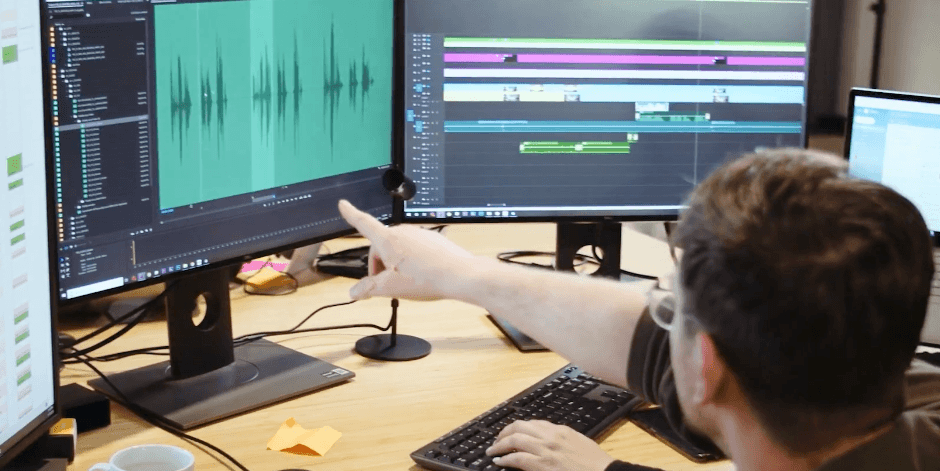
With the project now back in my hands, I add voiceover, insert scene exploration activities, and build testing into each module. For this, I use Creator, Strivr’s software tool that’s designed to build VR training experiences on top of film assets.
First, I load the 360-video, which is already edited and stitched together. Since the video is clean already, I simply add the “learning” — multiple choice quizzes, scene hunts, explorations, and more.
The goal here is to layer instructional design assessment and tactics onto the film, resulting in the highest quality Immersive Learning experiences.
Step 6: Customer sign-off
Once complete, the finished product goes to the customer for review. If the customer desires any tweaks to wording or assessments that are layered onto the film, I might see it one more time to make those changes. Otherwise, they give us final sign-off and my role is complete! The customer now has an Immersive Learning experience ready to be deployed to their employees.
VR instructional design requires expertise & collaboration
The key takeaway is that instructional design for VR is significantly different than traditional approaches. In addition, a traditional instructional designer will face boundless challenges if trying to design for VR without the proper experience, knowledge, and team.
Strivr is able to create such impactful VR training experiences because we collaborate every step of the way: from instructional design to immersive content specialists to data analytics.
But we couldn’t achieve anything without a strong partnership with our customers. While we drive the process, their passion for amazing employee experiences that elevate performance is really the lifeblood of what we do at Strivr.
